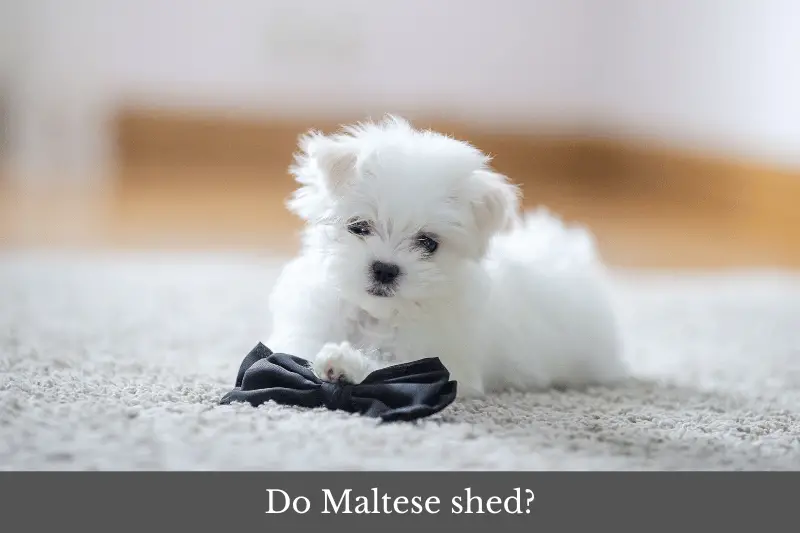Maltese dogs are beloved for their charming personalities and beautiful, flowing white coats. One common question potential owners have is whether Maltese dogs shed. Shedding refers to the process by which dogs lose their old or damaged hair, and it can be a concern for individuals with allergies or those who prefer a cleaner living environment. Let’s take a look at the shedding characteristics of Maltese dogs, exploring the factors that contribute to shedding, shedding patterns, and tips for managing and reducing shedding.

Understanding shedding
To understand shedding in Maltese dogs, it’s essential to recognize that shedding is a natural process for all dogs. Shedding helps dogs get rid of old or damaged hair and allows for the growth of new, healthy hair. However, the degree of shedding can vary greatly among different dog breeds.
Shedding in Maltese dogs
Maltese dogs are known for being low-shedding dogs. Their coat consists of long, silky hair rather than fur. Unlike dogs with double coats, such as German Shepherds or Siberian Huskies, Maltese dogs possess a single-layered coat of hair, similar to human hair. This single coat structure contributes to their minimal shedding tendencies.
Factors influencing shedding
Although Maltese dogs shed less than many other breeds, several factors can influence the shedding process:
- Seasonal changes: Dogs, including Maltese, may experience some increased shedding during seasonal changes. This shedding is often attributed to the adaptation of their coat to different weather conditions. However, the amount of shedding is typically minimal compared to breeds with thicker fur.
- Hormonal changes: Hormonal fluctuations, such as those occurring during pregnancy or heat cycles in females, can affect shedding patterns. However, these changes are temporary and usually not significant in Maltese dogs.
- Health and nutrition: A dog’s overall health and nutrition play a vital role in maintaining a healthy coat. Poor diet or underlying health issues can impact the quality of a Maltese dog’s hair and potentially lead to increased shedding. Providing a balanced diet and regular veterinary care can help minimize shedding associated with health factors.
- Stress and anxiety: Just like humans, dogs can experience stress and anxiety, which can manifest in various ways, including increased shedding. Maltese dogs thrive in a calm and stable environment, and minimizing stressors can help reduce shedding caused by anxiety.
Managing Shedding
While Maltese dogs are low-shedding, some steps can be taken to manage and reduce shedding even further:
- Regular brushing: Brushing your Maltese dog’s coat regularly helps remove loose and dead hair, preventing it from accumulating in your home. It also helps distribute natural oils and promotes a healthy coat. Use a slicker brush or a comb with wide-spaced teeth to prevent discomfort or hair breakage.
- Bathing and grooming: Regular bathing and grooming are essential for maintaining a healthy coat in Maltese dogs. Use a gentle, hypoallergenic shampoo and conditioner designed for dogs. Additionally, trimming the hair around the eyes, ears, and paws can help prevent tangling and matting.
- Healthy diet: Providing a well-balanced and nutritious diet is crucial for the overall health of your Maltese dog, including their coat. Consult with your veterinarian to ensure your dog’s diet meets their specific nutritional needs.
- Environmental factors: Minimizing environmental allergens, such as dust or pollen, can help reduce shedding related to allergies. Regular vacuuming, air purifiers, and keeping your home clean and well-maintained can contribute to a healthier coat.
Summary
Maltese dogs are generally considered low-shedding dogs due to their single-layered coat of hair. While shedding is a natural process, Maltese dogs shed minimally compared to many other breeds. By understanding the factors that contribute to shedding and implementing appropriate grooming practices and a healthy lifestyle, you can help manage and reduce shedding in your Maltese companion. Remember that individual dogs may vary in their shedding patterns, and if you have specific concerns, it’s always best to consult with a veterinarian for personalized advice.
